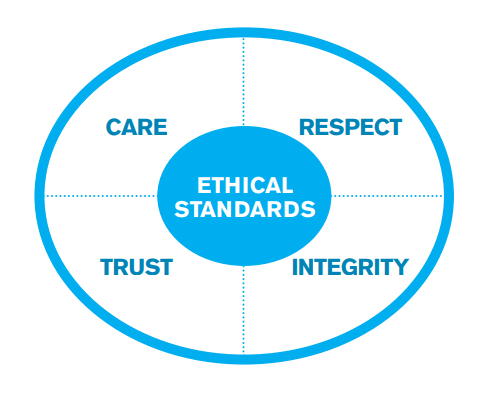Share this page
By Michael Salvatori, OCT
@Michael_OCTOEEO
Photo: Matthew Plexman

I’ve learned that people will forget what you said, people will forget what you did, but people will never forget how you made them feel. —Maya Angelou
If we reflect on this statement by the late poet, each of us can recall recent examples that reinforce its truth. It also relates well to the ethical standard of care that we exemplify as members of the teaching profession.
We certainly know care when we see it, but defining care can be challenging. In the context of professional regulation, our ethical standard of care embraces notions of compassion, acceptance, interest and insight for developing students’ potential. Members of the profession express their commitment to students’ well-being and learning through positive influence, professional judgment and empathy in practice.
I witnessed one of the most meaningful observations of care in my first few months as a vice-principal, which has stayed with me. A single parent with a physical disability gathered her three children at the front door of our school to call a taxi to take them home. Our kindergarten teacher was leaving at the same time and, without hesitation and despite a full day of teaching and an evening of conferences, stepped next to the parent whose children she had taught and offered to drive them all home.
It was a generous gesture that recognized the unexpressed needs of another, despite the teacher’s long day and personal needs. It was also an example of care in action, sincerely offered without personal gain.

Researcher and former teacher Charlotte Danielson has developed a framework for teaching and, in a 2013 evaluation instrument based on the framework, she describes distinguished practice within the domain of creating an environment of respect and rapport.
“Classroom interactions between the teacher and students and among students are highly respectful, reflecting genuine warmth, caring, and sensitivity to students as individuals,” she writes. “Students exhibit respect for the teacher and contribute to high levels of civility among all members of the class. The net result is an environment where all students feel valued and are comfortable taking intellectual risks.”
Empathy, compassion and care engender reciprocity in the classroom and school environment that strengthens a culture in which civility and respect prosper. Teachers lead by example and students follow.
Our school and school board leaders also live this ethic of care in their practice. I recently had the pleasure of hearing anthropologist and author Simon Sinek speak about leadership. He spoke so passionately of the ethic of care at the heart of leadership that I purchased his book, Leaders Eat Last. Drawing on examples from early tribes of hunters and gatherers, he suggests that great leaders are those who sacrifice their own interests and comfort for the good of those entrusted to their care. In so doing, they create a “Circle of Safety” that shelters their wards from the challenges, hardships or obstacles around them.
School and school board leaders embody the ethic of care through the supports they offer to their school communities, the affirmation they provide and the examples they set. In so doing, they create schools and school boards in which care, empathy and compassion thrive.
This new year brings hope and holds promise because you care, and because the students and families you serve know it.
